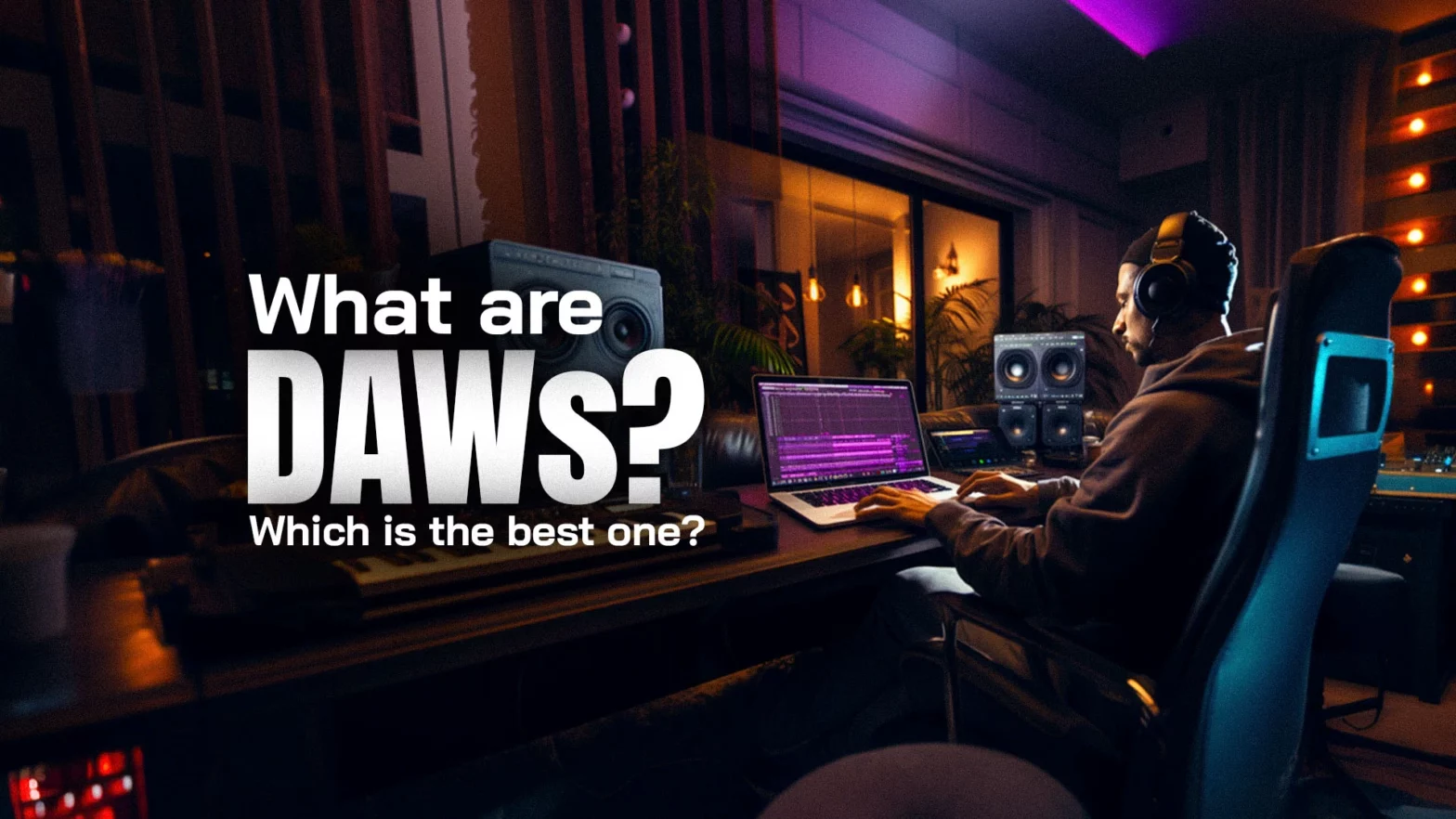Table of Contents
For music producers and sound engineers, Digital Audio Workstations (DAWs) stand as the unsung heroes, quietly revolutionising the creative process for all musicians alike. But what exactly a DAW is, and how have they transformed the landscape of modern music production? Let’s embark on a journey to unravel the essence of DAWs, exploring their origins, functionalities, and impact.
What are Digital Audio Workstations?
In simple terms, a Digital Audio Workstation, commonly abbreviated as DAW, is a comprehensive software application designed to facilitate the recording, editing, mixing, and mastering of digital audio. It serves as a virtual studio, integrating various tools and functionalities necessary for music production into a single platform. Essentially, a DAW provides musicians and audio engineers with a digital canvas where they can unleash their creativity, manipulate sound elements, and craft professional-grade audio compositions. From recording live instruments to arranging virtual synthesisers, from fine-tuning vocal performances to adding intricate effects, DAWs offer a vast array of capabilities tailored to meet the diverse needs of music creators.
History of DAWs
The evolution of DAWs traces back to the late 20th century when advancements in computing technology began to intersect with the burgeoning field of music production. In the early days, DAWs were primarily confined to rudimentary software applications running on personal computers, offering basic recording and editing functionalities.
One of the pioneering DAWs, Soundstream, emerged in the late 1970s, marking the inception of digital recording technologies. However, it wasn’t until the 1990s that DAWs started gaining mainstream prominence with the advent of software like Pro Tools by Digidesign (now Avid) and Cubase by Steinberg. These platforms revolutionised the industry by introducing multitrack recording, MIDI sequencing, and sophisticated audio processing capabilities.
Over the years, DAWs have undergone significant advancements, fueled by rapid technological progress. Today, modern DAWs boast an extensive feature set, including virtual instruments, audio effects, robust mixing consoles, and seamless integration with external hardware devices, empowering users to realise their creative visions with unparalleled precision and efficiency.
How do DAWs work?
At the core of every DAW lies a set of fundamental components that collectively enable its functionality:
Audio Recording: DAWs allow users to capture audio signals from external sources such as microphones, instruments, or MIDI controllers. The recorded audio is then stored in digital format within the software environment.
Editing and Arrangement: DAWs provide a versatile set of editing tools for manipulating recorded audio and MIDI data. Users can cut, copy, paste, and rearrange audio clips, apply corrective processes like pitch correction and time stretching, and create intricate arrangements with ease.
Mixing and Effects Processing: DAWs feature sophisticated mixing consoles where users can adjust the volume, pan, and spatial positioning of individual tracks within a project. Additionally, they offer a diverse range of built-in audio effects such as reverb, delay, EQ, and compression, empowering users to sculpt the sonic characteristics of their compositions.
Mastering and Exporting: Once the creative process is complete, DAWs facilitate the mastering phase, where the final mix is polished to achieve optimal balance, clarity, and consistency. Users can then export their finished compositions in various formats suitable for distribution or further post-production processes.
How to Choose a DAW
Define Your Needs: Before diving into the sea of DAW options, take a moment to assess your requirements. Are you a singer-songwriter looking to record acoustic performances? A beatmaker crafting electronic music? Or perhaps an audio engineer working on film scoring projects? Understanding your specific workflow and production goals will help narrow down the choices.
Compatibility and Integration: Consider the compatibility of the DAW with your existing hardware setup and preferred plugins. Look for seamless integration with audio interfaces, MIDI controllers, and third-party plugins to ensure a smooth workflow without compatibility issues.
User Interface and Workflow: Pay attention to the user interface and workflow of the DAW. Choose a platform that aligns with your working style and preferences, whether you prefer a sleek and minimalist design or a more feature-rich interface with customizable options.
Trial Versions and Demos: Many DAWs offer trial versions or demos that allow you to test drive the software before making a purchase. Take advantage of these opportunities to get hands-on experience and determine if the DAW meets your expectations in terms of usability, functionality, and performance.
What to Look out for
Flexibility and Versatility: Opt for a DAW that offers flexibility and versatility to accommodate a wide range of musical genres and production techniques. Look for features like robust MIDI sequencing, comprehensive audio editing tools, and support for virtual instruments and effects plugins.
Stability and Reliability: Stability is paramount when it comes to music production. Choose a DAW known for its reliability and stability, with regular updates and a dedicated support system to address any technical issues or bugs promptly.
Scalability and Expansion: Consider the scalability and expansion options offered by the DAW. Look for a platform that can grow with your skills and production needs, with options to upgrade to higher-tier versions or expand functionality through additional plugins and extensions.
Community and Support: Evaluate the community and support ecosystem surrounding the DAW. A vibrant user community and active developer support can provide valuable resources, tutorials, and troubleshooting assistance to enhance your learning experience and productivity.
Top 5 DAWs
Ableton Live: Renowned for its intuitive workflow and powerful performance capabilities, Ableton Live is a favourite among electronic music producers and live performers. With its innovative session view and flexible arrangement view, Live offers a dynamic environment for experimentation and creativity.
Pro Tools: A staple in professional studios worldwide, Pro Tools sets the industry standard for audio recording, editing, and mixing. With its comprehensive feature set and rock-solid stability, Pro Tools is ideal for professional audio engineers and post-production professionals.
Logic Pro X: Exclusively available for macOS users, Logic Pro X combines a sleek and intuitive interface with a vast array of virtual instruments, effects, and production tools. From songwriting to film scoring, Logic Pro X offers everything you need to bring your musical ideas to life.
FL Studio: Widely acclaimed for its user-friendly interface and robust beat-making capabilities, FL Studio (formerly known as FruityLoops) is a favourite among hip-hop producers and electronic music enthusiasts. With its innovative pattern-based sequencing and extensive plugin support, FL Studio offers endless possibilities for creative expression.
Cubase: Developed by Steinberg, Cubase has long been a powerhouse in the world of music production. With its comprehensive feature set, including advanced MIDI editing, score layout, and audio manipulation tools, Cubase is a versatile choice for musicians, composers, and producers across various genres.
In conclusion, choosing the right DAW is a personal journey that depends on your unique preferences, workflow, and production goals. By considering factors such as compatibility, usability, stability, and community support, you can find the perfect DAW to fuel your creative endeavours and unlock your full potential in music production.

